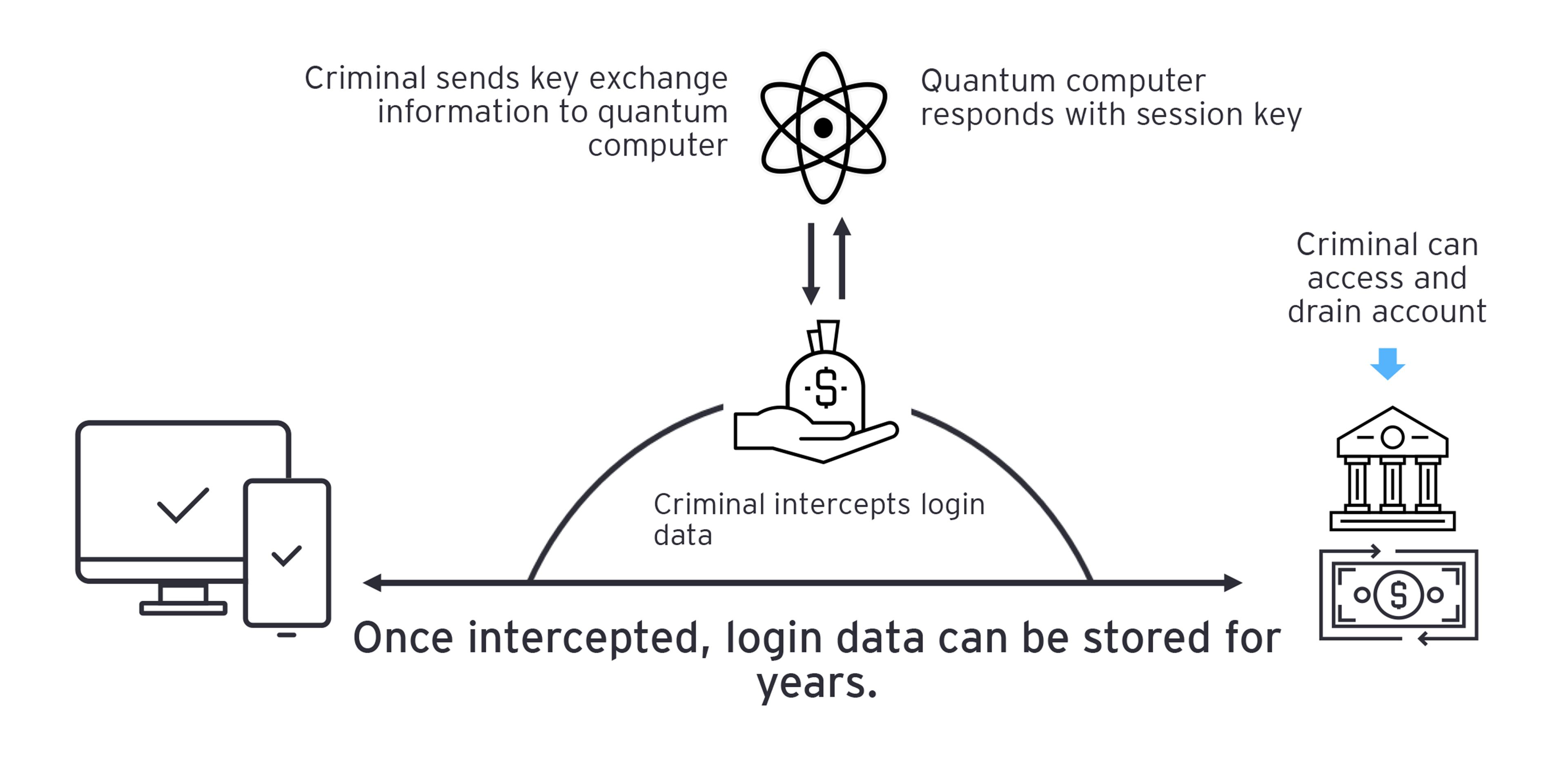EY refers to the global organization, and may refer to one or more, of the member firms of Ernst & Young Global Limited, each of which is a separate legal entity. Ernst & Young Global Limited, a UK company limited by guarantee, does not provide services to clients.
How EY can help
-
EY-Parthenon teams can help develop and implement technically informed, data-driven strategies to address complex issues. Learn more.
Read more
Assessing the quantum cybersecurity threat
The backbone of cybersecurity is encryption: the ability to send and store sensitive data by rendering it inaccessible to unauthorized parties. This inaccessibility is achieved using complex mathematical problems that are difficult to solve, yet easy to verify. Even the most powerful classical computers would take longer than the current estimated age of the universe to crack the mathematical framework behind modern encryption, according to the National Institute of Standards and Technology (NIST).²
Quantum computing, with its ability to rapidly solve the mathematical puzzles that keep modern encryption secure, is likely to render the current encryption playbook obsolete. Unlike traditional cyberattacks that leverage coding errors, backdoors and social engineering, quantum attacks will simply bypass encryption and walk straight in, fundamentally disrupting modern cybersecurity.
The problem is immense: More than 20 billion digital devices will require updates to quantum-safe cryptography in the next two decades.³
Beating the quantum timeline
A growing number of global financial services organizations have begun to take note, hiring experts and investing in the development of quantum-resistant technologies and intellectual property. Others are still on the sidelines, not wanting to be the first to act but running the risk of falling behind in a rapidly evolving technological landscape.
Their hesitancy is understandable. Most experts estimate it will take another five to 10 years before quantum computers can break RSA, the world’s most widely used encryption system. While large state actors are expected to be the first to achieve quantum capabilities, democratization of the technology by rogue actors is anticipated to follow quickly. Despite this timeline, the moment for most financial services organizations to begin addressing their vulnerabilities to quantum threats is now, before large-scale quantum machines arrive.
A particularly urgent concern is the possibility of "harvest now, decrypt later" quantum attacks, where perpetrators intercept and store encrypted data that is currently secured by public-keys like RSA or elliptic curve cryptography. They can then wait until a large-scale quantum computer is available and quickly decrypt the stored data, granting access to proprietary systems, infrastructure and customer accounts (see figure below). This threat highlights the organizational urgency to develop and deploy post-quantum cryptographic systems that can resist attacks from both classical and quantum computers. Mitigation measures such as limiting the amount of data encrypted with a single key and using key lengths that are less vulnerable can be immediately deployed.







